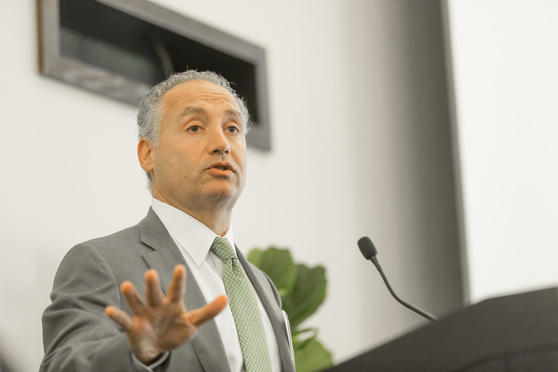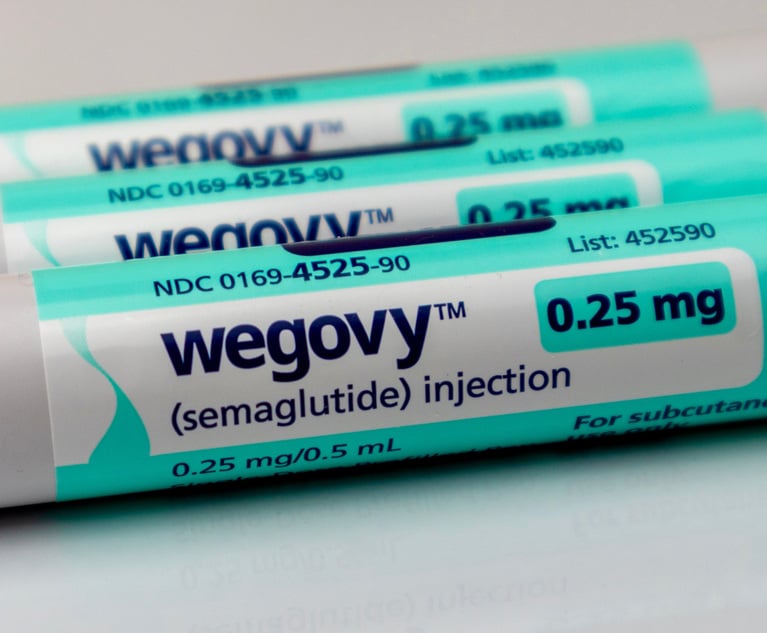Delaware Judge Rules Stanford Organ Transplant Patents Pass Section 101 Muster
Weil Gotshal pilots licensee CareDx to a rare eligibility finding for a medical diagnostics patent.
February 11, 2020 at 02:59 PM
3 minute read
The original version of this story was published on Delaware Law Weekly
 Weil Gotshal partner Edward Reines. Photo: Jason Doiy/ALM
Weil Gotshal partner Edward Reines. Photo: Jason Doiy/ALM
Medical diagnostics patents aren't dead yet. At least, not all of them.
Last year, the U.S. Court of Appeals for the Federal Circuit and the solicitor general called on the Supreme Court to reconsider the application of Section 101 of the Patent Act to medical diagnostics. "Since Mayo, we have held every single diagnostic claim in every case before us ineligible," Judge Kimberly Moore of the U.S. Court of Appeals for the Federal Circuit wrote for herself and three other judges in Athena Diagnostics v. Mayo Collaborative. "The bottom line for diagnostics patents is problematic," Judge Todd Hughes of the U.S. Court of Appeals for the Federal Circuit wrote for himself and two others.
Of course, the Supreme Court declined to take up the case last month, and the outlook for diagnostics patents has remained dim.
But on Monday, Brisbane, California-based CareDx Inc. took a big step toward getting judicial approval of its patented AlloSure technology for assessing organ transplant rejections via a blood test. U.S. Magistrate Judge Christopher Burke of the District of Delaware recommended that two patents developed at Stanford University and licensed to CareDx be ruled eligible for patenting.
"We're delighted that the Stanford patents were upheld on Section 101 grounds given the current state of the law," said Weil, Gotshal & Manges partner Ed Reines, who represents CareDx and Stanford.
CareDx and sued San Carlos, California-based Natera Inc. and Lee's Summit, Missouri-based Eurofins Viracor Inc. last year. Natera, represented by Quinn Emanuel Urquhart & Sullivan, and Viracor, represented by Goodwin Procter, moved to dismiss. Natera argued last summer that the patents "rest entirely on observing natural phenomena inherent to organ transplants: the presence of an organ donor's nucleic acids (such as DNA) in the transplant recipient's circulation (such as blood), and a correlation of that presence to rejection of the transplanted organ by the recipient's body."
To Burke, what tipped the balance was language in the patent claim specification "repeatedly and consistently" saying that that correlation had already been well-known for a long time. "Thus, the patent explains, scientists had for years been attempting to find ways to test for and detect the presence of such donor-specific cfDNA," Burke wrote in an 11-page order.
What was invented was "a genetic fingerprint" of the organ donor that would show up in the recipient's blood if the organ were being rejected. Specifically, that would be "the use of digital PCR/high-throughput sequencing/multiplex sequencing, at certain levels of sensitivity, to identify homozygous or heterozygous [single nucleotide polymorphisms] in the blood of the transplant recipient," Burke wrote.
"It is these purportedly new, unconventional combination of steps that the claims are directed to, not the natural law itself," Burke concluded. He even threw in a cf citation to the Federal Circuit's Athena opinion for good measure.
It will now be up to U.S. District Judge Colm Connolly of the District of Delaware whether to adopt Burke's recommendation.
This content has been archived. It is available through our partners, LexisNexis® and Bloomberg Law.
To view this content, please continue to their sites.
Not a Lexis Subscriber?
Subscribe Now
Not a Bloomberg Law Subscriber?
Subscribe Now
NOT FOR REPRINT
© 2025 ALM Global, LLC, All Rights Reserved. Request academic re-use from www.copyright.com. All other uses, submit a request to [email protected]. For more information visit Asset & Logo Licensing.
You Might Like
View All
Zoom Faces Intellectual Property Suit Over AI-Based Augmented Video Conferencing
3 minute read
Etsy App Infringes on Storage, Retrieval Patents, New Suit Claims


Novo Nordisk Files Patent Claims to Fend off Generic Rivals of Wegovy
3 minute readLaw Firms Mentioned
Trending Stories
- 1Investor Sues in New York to Block $175M Bitcoin Merger
- 2Landlord Must Pay Prevailing Tenants' $21K Attorney Fees in Commercial Lease Dispute, Appellate Court Rules
- 3Compliance with EU AI Act Lags Behind As First Provisions Take Effect
- 4NJ's Pardons and Commutations A Model for the Federal System
- 5As Political Retribution Intensifies, Look to Navalny's Lawyers
Who Got The Work
J. Brugh Lower of Gibbons has entered an appearance for industrial equipment supplier Devco Corporation in a pending trademark infringement lawsuit. The suit, accusing the defendant of selling knock-off Graco products, was filed Dec. 18 in New Jersey District Court by Rivkin Radler on behalf of Graco Inc. and Graco Minnesota. The case, assigned to U.S. District Judge Zahid N. Quraishi, is 3:24-cv-11294, Graco Inc. et al v. Devco Corporation.
Who Got The Work
Rebecca Maller-Stein and Kent A. Yalowitz of Arnold & Porter Kaye Scholer have entered their appearances for Hanaco Venture Capital and its executives, Lior Prosor and David Frankel, in a pending securities lawsuit. The action, filed on Dec. 24 in New York Southern District Court by Zell, Aron & Co. on behalf of Goldeneye Advisors, accuses the defendants of negligently and fraudulently managing the plaintiff's $1 million investment. The case, assigned to U.S. District Judge Vernon S. Broderick, is 1:24-cv-09918, Goldeneye Advisors, LLC v. Hanaco Venture Capital, Ltd. et al.
Who Got The Work
Attorneys from A&O Shearman has stepped in as defense counsel for Toronto-Dominion Bank and other defendants in a pending securities class action. The suit, filed Dec. 11 in New York Southern District Court by Bleichmar Fonti & Auld, accuses the defendants of concealing the bank's 'pervasive' deficiencies in regards to its compliance with the Bank Secrecy Act and the quality of its anti-money laundering controls. The case, assigned to U.S. District Judge Arun Subramanian, is 1:24-cv-09445, Gonzalez v. The Toronto-Dominion Bank et al.
Who Got The Work
Crown Castle International, a Pennsylvania company providing shared communications infrastructure, has turned to Luke D. Wolf of Gordon Rees Scully Mansukhani to fend off a pending breach-of-contract lawsuit. The court action, filed Nov. 25 in Michigan Eastern District Court by Hooper Hathaway PC on behalf of The Town Residences LLC, accuses Crown Castle of failing to transfer approximately $30,000 in utility payments from T-Mobile in breach of a roof-top lease and assignment agreement. The case, assigned to U.S. District Judge Susan K. Declercq, is 2:24-cv-13131, The Town Residences LLC v. T-Mobile US, Inc. et al.
Who Got The Work
Wilfred P. Coronato and Daniel M. Schwartz of McCarter & English have stepped in as defense counsel to Electrolux Home Products Inc. in a pending product liability lawsuit. The court action, filed Nov. 26 in New York Eastern District Court by Poulos Lopiccolo PC and Nagel Rice LLP on behalf of David Stern, alleges that the defendant's refrigerators’ drawers and shelving repeatedly break and fall apart within months after purchase. The case, assigned to U.S. District Judge Joan M. Azrack, is 2:24-cv-08204, Stern v. Electrolux Home Products, Inc.
Featured Firms
Law Offices of Gary Martin Hays & Associates, P.C.
(470) 294-1674
Law Offices of Mark E. Salomone
(857) 444-6468
Smith & Hassler
(713) 739-1250






